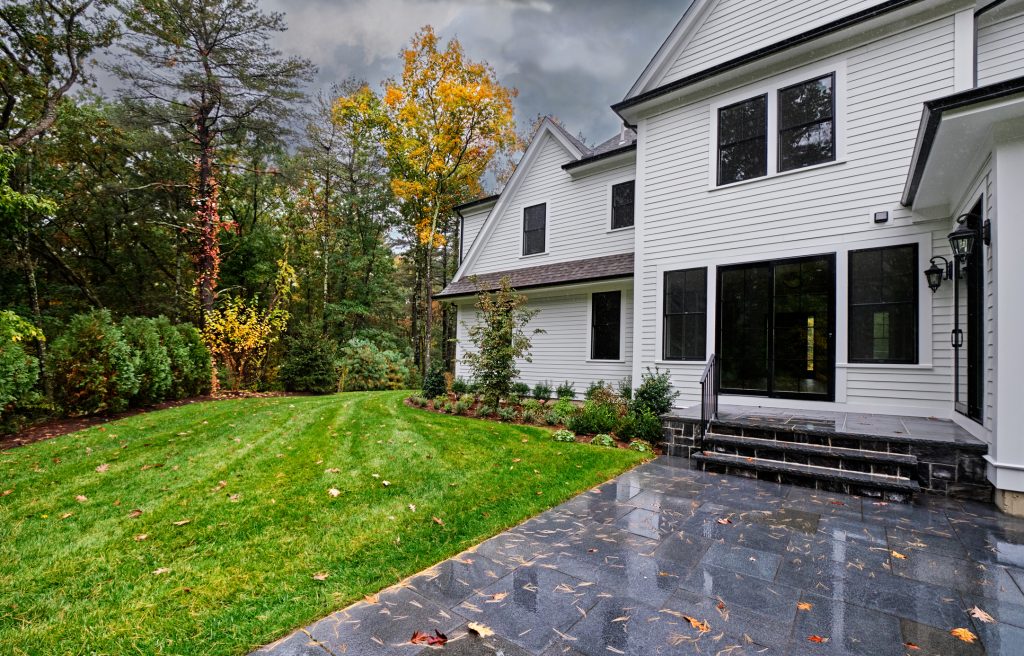
While some weatherproofing can be done on your own, knowing when to call in experienced help is important. The pros can spot problems that aren’t always visible and provide long-term solutions rather than quick fixes.
Weatherproofing your home may sound like a seasonal chore, but it’s really about protecting your space year-round. Whether you’re preparing for winter’s chill or summer’s humidity, small improvements can make a big difference in how your home feels… and how much you spend on utilities!
Keeping drafts and moisture out both enhances comfort and preserves your home’s structure while reducing long-term maintenance costs, so it’s worth it to know how to do this type of maintenance!
Start With The Areas You Can Feel
One of the easiest ways to identify weatherproofing problems is to notice where your home feels uncomfortable. Drafts near windows and doors are some of the most common signs that air is sneaking in or out.
Even without visible gaps, older frames can allow airflow due to wear and tear or outdated seals. Replacing worn weatherstripping and installing new door sweeps is a fast, affordable fix. In some cases, applying caulk around trim can close up those tiny openings that let outside air creep in.
Windows Deserve Extra Attention
Windows are often the biggest source of heat loss in winter and heat gain in summer, especially in older homes. If your windows are in good shape, adding insulating film during the colder months can help improve their performance.
For older or drafty panes, applying caulk or using rope caulk to fill small cracks can reduce unwanted airflow. Heavy curtains can also contribute to energy savings by helping regulate temperature throughout the day. If window repair or replacement feels overwhelming, it may be time to bring in professional support to assess the situation.
Inspect The Attic And Crawlspaces
Insulation plays a key role in weatherproofing, especially in areas like the attic or crawlspace that don’t get much day-to-day attention. Gaps around vents, pipes, or recessed lighting fixtures can allow air movement between the attic and your living space. Moisture entering through poorly sealed openings can lead to mold, rot, and pests. Sealing those gaps with foam or insulation board is usually an effective solution.
Check The Foundation And Exterior Walls
Moisture problems often start from the ground up; cracks in the foundation or gaps in siding can let moisture seep in slowly over time. Walk around your home’s perimeter and check for areas where water tends to pool or where exterior walls appear stained or damaged.
Applying appropriate sealants or waterproofing materials around the base of your home can create a reliable barrier against dampness. Flashing, gutters, and downspouts should also be checked to make sure they’re diverting water away properly.
Don’t Forget The Garage And Utility Rooms
Spaces like garages, laundry rooms, and utility closets tend to be less insulated and more exposed to temperature shifts. While they may not need the same level of protection as your main living areas, sealing gaps around utility penetrations, vents, and garage doors can still help maintain indoor comfort and improve efficiency.
Professional Help Can Make The Difference
While some weatherproofing can be done on your own, knowing when to call in experienced help is important. The pros can spot problems that aren’t always visible and provide long-term solutions rather than quick fixes.
Whether it’s updating insulation, addressing moisture issues, or sealing up a tricky leak that keeps coming back, expert support gives you peace of mind and saves you time.
If you’re ready to make your home more comfortable, efficient, and protected from the elements, One Man and a Toolbox is here to help. A more comfortable home starts with a simple step, and we’re just a call or email away. Reach out today to ask about our services or schedule your weatherproofing appointment.
